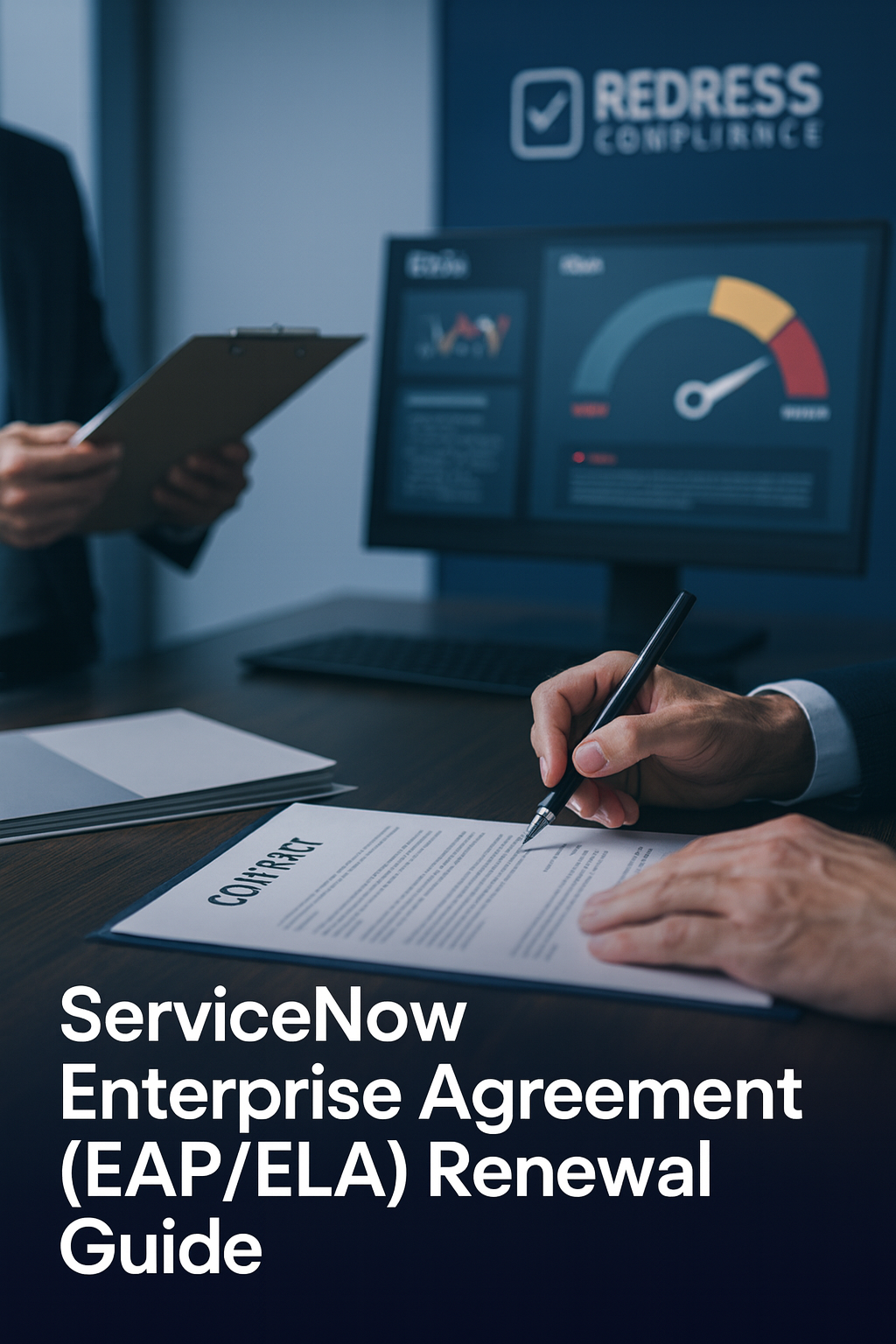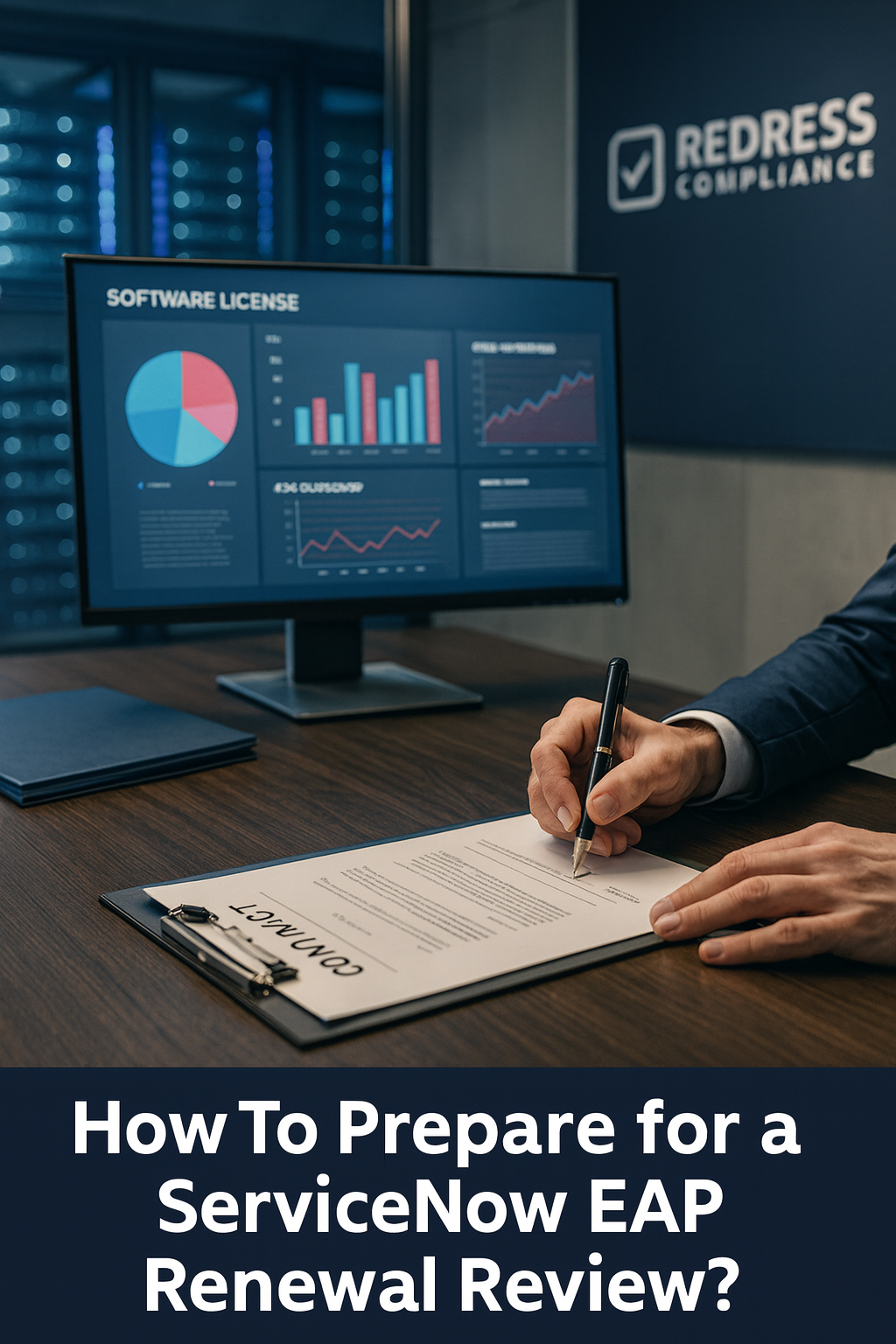How to Secure Maximum Discounts in Your ServiceNow ELA Renewal
Approaching a ServiceNow Enterprise License Agreement (ELA) renewal can feel like a high-stakes game. ServiceNow’s sales teams are famously tough on protecting their revenue, since they thrive on consistent Annual Recurring Revenue (ARR) growth. Read our ultimate ServiceNow Enterprise Agreement (EAP/ELA) Renewal Guide.
That means your account rep is trained to defend renewal pricing and minimize discounts. Renewals make up a huge portion of ServiceNow’s revenue growth, so they won’t just hand out a break in price without a compelling reason.
However, a savvy CIO or IT procurement leader can still secure substantial discounts – often 20% to 40% on large renewals – by using the right negotiation tactics. This playbook walks you through those tactics step by step.
Think of it as a negotiation coach guiding you calmly through the process, showing where you have leverage and how to use it without damaging the vendor relationship. Let’s dive into the strategies that can move the needle on your ServiceNow renewal deal.
Why Discounts Are Harder to Get Now
ServiceNow has transformed from a scrappy disruptor into an enterprise software giant that expects steady annual revenue increases. By the time you’re up for renewal, your spending is already significant, and they plan for it to grow. Their sales model is built around expanding existing accounts – meaning they assume renewals will deliver more revenue year over year. This is why renewal discounts have become tougher to capture.
Your sales representative might insist that “discounts are only for new business” and treat renewal pricing as fixed. Don’t buy it. They defend pricing because their compensation and forecasts depend on it, but they do have flexibility. With strong justification and leverage, even a stubborn rep can find extra room to discount.
Pro Tip: If your rep says “discounts only apply to new business,” smile — that’s your signal to start negotiating harder.
Levers That Drive ServiceNow Discounts
ServiceNow doesn’t treat every renewal the same. They have internal criteria that allow reps to give more discounts when certain conditions are met. By understanding these levers, you’ll know where to focus your strategy. Here are the main factors and their typical impact:
| Leverage Factor | How It Works | Negotiation Impact |
|---|---|---|
| Deal Size | Larger renewals unlock higher internal discount thresholds | High |
| Contract Term | Multi-year deals (especially 3-year terms) often merit higher discounts | Medium |
| Timing | End of fiscal year (Q4, Jan 31) is when reps face maximum sales pressure | High |
| Competitive Options | Mentioning alternative solutions (e.g., Jira, Freshservice) triggers retention pricing | Medium |
| Usage Data | Low utilization of licenses makes a case for price reduction or module swap | High |
| Expansion Potential | Promising future module or license expansion can earn a discount now | High |
Pro Tip: Discounts come from leverage, not loyalty. The more credible your alternatives, the more generous ServiceNow becomes.
Using Usage Data as Negotiation Currency
One of the strongest negotiation cards you can play is your own usage data. Before renewal talks, pull detailed reports on how your teams are actually using each ServiceNow module. Break it down by product, user roles, and regions. Identify where you’ve over-invested – for example, modules that only a handful of people use, or licenses you purchased that aren’t being fully utilized.
Presenting these facts to ServiceNow shifts the conversation. Instead of saying “we think we deserve a discount,” you’re proving it. If you show that entire modules have low adoption or large numbers of licenses sit idle, it justifies cutting costs or reallocating your spend. ServiceNow respects data-backed positions far more than pleas for fairness. With facts on the table, they’re under pressure to respond with real concessions.
Mini-Scenario: “A global manufacturer proved that only 65% of their HR Service Delivery (HRSD) licenses were active. That hard data earned them a 22% renewal discount, plus an extra six months of support thrown in to boost value.”
Pro Tip: Turn usage reports into a story: low use, stable value, lower risk — so pricing should follow suit.
How to manage price uplifts in your renewal: Managing Price Uplifts in Your ServiceNow Renewal.
Timing Negotiations for Maximum Leverage
Timing can dramatically amplify your leverage. ServiceNow’s fiscal year ends January 31, so Q4 (Nov–Jan) is when sales reps feel the most pressure to hit annual quotas. During that window, they’re far more motivated to close deals and may be unusually flexible with pricing to get contracts signed.
Engaging early (at least 6 months before renewal) also flips the script on their playbook. When you’re proactive, you deny ServiceNow the last-minute pressure tactics they rely on. They realize you won’t be rushed, which forces them to negotiate on merits instead of deadlines.
Mini-Scenario: “A financial services firm deliberately delayed signing their renewal until it slid into ServiceNow’s Q4. By pushing the deal into January, they squeezed out an extra 10% discount – the rep scrambled to meet fiscal year-end targets, and the customer walked away with a much better price.”
Pro Tip: Discounts peak when reps panic. Plan your big asks to land in their final quarter.
Read how to rightsize your ServiceNow ELA, Rightsizing and True-Down Strategies During Your ServiceNow Renewal.
Building a Discount Justification Package
Successful negotiators come prepared with a solid case. One effective approach is to compile a brief “renewal justification” document that quantifies and rationalizes your requests. Think of it as your negotiation cheat sheet. Here’s what to include:
- Current spend vs. usage: Highlight if you’re paying for far more licenses than you actually use.
- Market benchmarks: Reference what similar companies pay (if you have that data).
- Competitive evaluation: Mention that you’re assessing other solutions (even if informally).
- Renewal targets: State your goal (e.g., “reduce total cost by 15%”).
Keep this brief – a one-pager is ideal – and factual. By sharing these points, you change the tone of the negotiation. It’s no longer just “we want a better deal”; you’ve laid out a business case. ServiceNow’s team will see you’ve done your homework, which makes it harder for them to brush off your asks or give vague excuses.
Pro Tip: Numbers change the conversation. Show your math — it forces ServiceNow to respond with real data and real concessions, not just sales talk.
Leveraging Competition Without Burning Bridges
Bringing up competitors is a classic tactic, but it needs to be handled delicately. You want to create the sense that ServiceNow could lose your business (or a part of it) without turning the discussion hostile. The key is subtlety and credibility. You don’t even have to mention a competitor by name to make the point.
For example, you might say you’re “benchmarking alternative solutions for some workflows.” That signals to the rep that they could lose some of your business, sparking retention efforts. If you do mention specific competitors, stick to credible ones relevant to your modules (Jira Service Management, Freshservice, BMC Helix, etc.). The tone should stay calm and matter-of-fact. Frame it as routine due diligence to ensure fair pricing, not an ultimatum.
Pro Tip: You’re not bluffing — you’re benchmarking. Frame it as making sure you’re getting fair value, not issuing an ultimatum.
Packaging Value-Add Concessions
A renewal win isn’t only about the percentage discount. If ServiceNow won’t budge further on price, ask for other forms of value that save you money or boost your ROI. In other words, shift the discussion to what else they can include in the deal.
Here are some valuable concessions to consider requesting:
- Extra licenses or modules: Ask for free add-on licenses or a trial of another module at no extra charge.
- Training or consulting: Request complimentary training sessions or ServiceNow expert hours to upskill your team.
- Extended support or price protection: Push to extend support or lock current pricing for the full term (no yearly increases).
- Module swap rights: Negotiate the option to swap an underused module for another of similar value during the term.
ServiceNow often has a discretionary budget for these sweeteners. From a rep’s perspective, adding extra value is easier to approve internally than giving a straight price cut – but for you, it’s effectively the same savings. Focus on the overall deal value to your organization, not just the headline discount.
Pro Tip: If they can’t lower the price, make them add value. These concessions cost ServiceNow less than a deeper discount, but can save you just as much.
Multi-Year Discount Structuring
Vendors often dangle a big first-year discount but then sneak in automatic 5–7% price uplifts each year that erode those gains. For your ELA renewal, negotiate a flat price across the full term – no built-in annual increases. If it’s a three-year deal, make sure Year 3 costs the same as Year 1 after your discount. This way, the savings you win don’t vanish later.
Also, plan for future growth. If you expect to add users or modules later, stipulate now that any additions get the same discount rate you’ve secured. That way, if your usage expands, you’re still paying the favorable rate and not the full list price for the new stuff.
Pro Tip: The real win isn’t just the first-year discount – it’s making sure that discount holds for all three years (or the full term of your agreement).
The Discount Playbook in Action
We’ve covered a lot of ground. To bring it all together, here’s a quick step-by-step playbook for maximizing your ServiceNow renewal outcome:
- Collect data: Gather usage stats, current spending, and any benchmark info to ground your negotiation in facts.
- Set a firm target: Decide your budget limits or discount goal internally, and use it as your negotiation anchor.
- Engage early & calmly: Start talks 6+ months out and mention you’re evaluating alternatives to signal you have options.
- Use timing pressure: Align key discussions with ServiceNow’s Q4 or other high-pressure periods when they’re most eager to close.
- Bundle your asks: Present your full list of needs (price, terms, extras) together as your final proposal to spur a one-shot approval from higher-ups.
Pro Tip: Fragmented asks waste leverage. Combine your requirements into one well-timed proposal for maximum impact.
Five Actions to Win the Best Renewal Deal
- Lead with data – usage and value metrics beat emotion. Come armed with facts to back up your asks.
- Anchor early – set your discount expectations first and frame the discussion around meeting your target, not theirs.
- Time your push – align negotiation milestones with ServiceNow’s fiscal pressures (quarter-end/year-end) when they’re most flexible.
- Bundle your asks – make a unified request covering price and extras so you trigger one big decision instead of many small ones.
- Lock in protection – ensure any discount you win is locked in for multiple years, and that future additions also benefit from it.
“Discounts aren’t gifts — they’re earned leverage. ServiceNow will test your timing, data, and conviction. If you have all three, the bigger deal will always move your way.”
Read about our ServiceNow Negotiation Services


